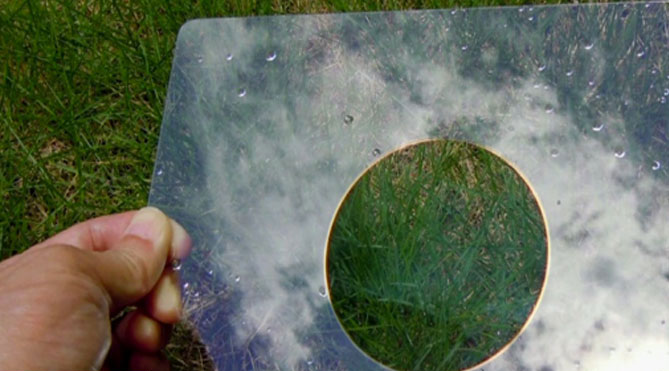
Displays are undoubtedly important for smartphones - without them, we wouldn't have a smartphone. But aside from the actual specifications of what makes the display tick on the inside, one of the more prominent Achilles' heels of a smartphone comes from the actual physique of the display: They're breakable. They smudge. They produce too much glare. All of these issues come from the type of glass that a manufacturer chooses to use on a smartphone, and for the most part, it looks like that's all about to change for the better in the near future.
Earlier this year we discovered what is now considered the thinnest material ever to be created, called graphene. Graphene is only one atom thick, but even for being so thin it has proven to be useful in many areas of mobile technology. We've heard that graphene can help create a powerful battery, a strong radio signal, and most importantly (for this article, at least) flexible, bendable displays. We've seen demonstrations from manufacturers like Samsung, who seem hopeful to employ this incredible technology sometime in the near future. While having a flexible display seems like an odd idea at first, the idea behind it is to help prevent the common issue of cracked or shattered glass on smartphones. Even the toughest glass to come through in mobile technology is prone to cracking, so perhaps the answer to the issue is to stop trying to create "the perfect glass" and use an entirely different material altogether. Or is it?
Cracks and breaks in a screen aren't the only problems that plague displays of today; you also have the issue of smudges and glare. Would graphene be able to fix that? And what about the people that actually prefer the form smartphones come in today? Not everybody is thrilled with the idea that their phone is as flexible as an olympic gymnast. Even I can admit I enjoy being able to hold a solid device in my hand while making a phone call or browsing the web. So while graphene might make a name for itself in the future, there are other alternatives well underway as well; more specifically, alternatives that also deal with the smudge and glare issue, not to mention possesses the ability to disinfect itself from bacteria and germs.
The screen doesn't have a name yet, but according to a report from Discovery, Corning, the makers of the famous Gorilla Glass, are working on a new type of display that is strong, clear, durable, and clean.
It is said that this new display can theoretically handle up to 10,000 elephants stacked on top of it. Why you would ever want to stack thousands of elephants on top of your phone is beyond me, but at least you know that according to Corning, you can do it if you want. Not only can this screen handle tons (and tons, and tons) of pressure, but it is also 30 times more transparent than the purest water and reduces glare when used outside. The picture below shows the difference between most glass used today and the new anti-glare technology coming from Corning. Yes, that "hole" is actually still glass.

And if the conqueror of 10,000 elephants with beauty that surpasses the purest water doesn't win you over, consider this next feature of the new display: antimicrobial coating is placed on the screen, and has shown to kill bacteria on the device within two hours. This is a godsend for those working in the field of repairing mobile phones. The next time a customer hands you their questionably damp phone and then explains that they accidentally dropped it in the loo, there is a slightly better chance that the bacteria on the phone won't turn you into a newt.
Neither graphene displays nor this new type of display from Corning have officially made an announcement, although graphene is predicted to appear at some point later this year or early next year, while Corning seems to have thrown out a brief guesstimate of around two years before we see their new display.
Both of these displays actually seem really cool, and I'm happy that Corning is working on a type of display that improves on what we have today while graphene takes a completely different approach. I can definitely see benefits to both, and am interested in trying both out in the future.
Readers, what do you think about the future of displays? Do you think you'd like to have a flexible display, or would you rather stick to a more traditional screen? Let me know your thoughts in the comments below!
Images via Discovery, Quick Men's Guide